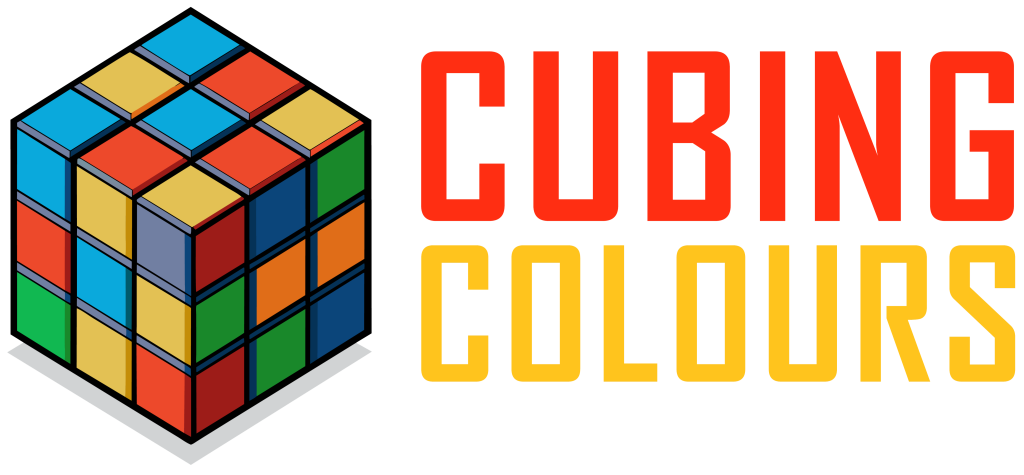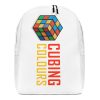Rubik’s Cube Solving Potential

Did you ever look at a Rubik’s Cube and think, “There’s no way I can solve this”? You’re not alone.
Many people love the idea of solving a Rubik’s Cube. Some pick it up with curiosity, others with determination. But here’s the truth — most people try, and most people give up. I’d estimate that maybe one in every 200 people globally can actually solve the Rubik’s Cube from start to finish without help.
And that’s fine. Just as not everyone can run 100 meters in less than 10 seconds, not everyone is geared to solve the Rubik’s Cube. But for those that are, the potential for Rubik’s Cube solving is phenomenal. And even if you’re not born with the ability, practice, patience, and the right methods, you’d be amazed at what you could do.
The Rubik’s Cube: A Puzzle with a Personality Test
Let’s be honest here — the Rubik’s Cube is not simply a toy. It’s a reflection of the way your mind operates. Are you systematic? Are you patient? Can you see patterns and think three moves down the line?
The more you practice the cube, the more proficient you become. But breaking it for the first time takes more than trial and error. It involves memory, logic, strategy — and above all, faith in your ability to solve it.
The Mind of a Potential Solver
There are not many born Rubik’s Cube solvers, but those few tend to have certain characteristics:
Strong memory: Just to make it through the simple solving steps, you need a good memory.
Exceptional memory: If you’re competing at the speed cuber level — i.e., solving the cube in seconds — your memory must be top-notch.
Logical thinking: You need to recognize relationships and patterns on every side.
Dexterity: Speed requires quick fingers and slick turns.
Hand-eye coordination: Critical to performing moves accurately under pressure.
Discipline: Muscle memory and repetition are your friends.
A majority of speed cubers I’ve encountered (and I’m one of them) enjoy math, science, or engineering. No surprise there. The cube conditions your brain the same way that difficult problems in those subjects do, by requiring you to persevere through multi-dimensional, layered difficulties.
My Journey with the Cube
When I first learned how to solve a Rubik’s Cube, I was hooked. Within 4 weeks, I was solving it in 58 seconds. Three months in, I clocked 27 seconds. That’s the thing with the cube — it becomes an obsession.
You start by solving one side. Then you want to solve the whole thing. Then you want to do it faster. Then faster still.
You know you’re a potential speed cuber when that urge takes over — when getting it once isn’t sufficient. You want to own it. You want to conquer it.
How to Solve a Rubik’s Cube (The Basic Way)
If you’re new at this, here’s a step-by-step guide on how to solve a Rubik’s Cube using the easy-to-learn Layer-by-Layer method:
- Create a white cross on one of the faces.
- White corners solution to finish the first layer.
- Align the middle layer’s edges with their centers.
- Make a yellow cross on the top layer.
- Place the yellow corners in place.
- Orient the yellow corners so that all sides align.
- Complete the cube by fixing the last edges.
This is the most popular starting Rubik’s cube technique. You don’t have to memorize 100+ algorithms — some steps and a lot of practice.
Rubik’s Cube Solution Techniques: Picking Your Route
As you advance, you will learn higher-level Rubik’s Cube solution techniques that involve memory, logic, and hard work.
1. Fridrich Method (CFOP)
This is the speedcuber’s favourite. It abbreviates as:
Cross
F2L (First Two Layers)
OLL (Orient Last Layer)
PLL (Permute Last Layer)
To become proficient in CFOP, you’ll have to memorize as many as 120 algorithms. Yes, 120. That’s where your memory really comes in handy. But it’s also what makes you able to solve the Rubik’s cube in less than 10 or even 7 seconds.
2. Roux Method
A different option that employs fewer algorithms but requires more intuition and effectiveness. Perfect for those who enjoy logical freedom.
3. ZZ Method
A hybrid that establishes edge orientation early, minimizing clumsy cube rotations and increasing fluidity.
4. Petrus Method
Perfect for students who wish to work towards minimizing move quantities. Less used within speedcubing, but great for comprehending cube mechanics.
These Rubik’s Cube solution methods place you in command of adapting your method of solving. Some seek speed. Others seek beauty. All demand dedication.
Are You a Potential Speed Cuber?
You must know.
There’s something in the swiftness of a person in grasping the cube, the speed at which they learn patterns, and the eagerness to outperform their previous time. If you begin solving within weeks, and you just can’t get enough, chances are, you’ve got the Rubik’s Cube solving potential.
Others, though, will never crack it — and that’s no slur. Like some are tone-deaf or unable to run a marathon, the cube isn’t for everybody. Even the greatest teacher on the planet can’t teach a person who won’t learn.
But if you’re willing, if you’re curious, and if you’ve got the kind of brain that likes a little bit of chaos before the order, then this cube could well transform the way you think.
Everyone Has Their Puzzle!
The Rubik’s Cube is a challenge of character as well as intellect. It pays off in patience, punishes with hurry, and instructs that all problems will be solved — you just have to have the right eye.
No one will be a speed cuber. Not everyone will be able to solve the cube. And that’s alright.
But for those who do, for those who attempt, and for those who persist, twisting even when it does not seem possible — the cube provides something invaluable: the understanding that your mind is capable of more than you ever imagined.
And whether you solve as a hobby or seek to set a world record, don’t forget — your Rubik’s Cube solving adventure is yours alone. And it could be the beginning of something amazing.


![[JudyCube] QiYi Warrior S 3x3x3 Magic Cube 3x3 Speed Cube Cubo Magico Magic Cubo Professional Fidget Toys Children's Gifts](https://cubingcolours.com/wp-content/uploads/2025/08/kf-S3175e74f7235409ab755baec634dca9du-100x100.webp)


